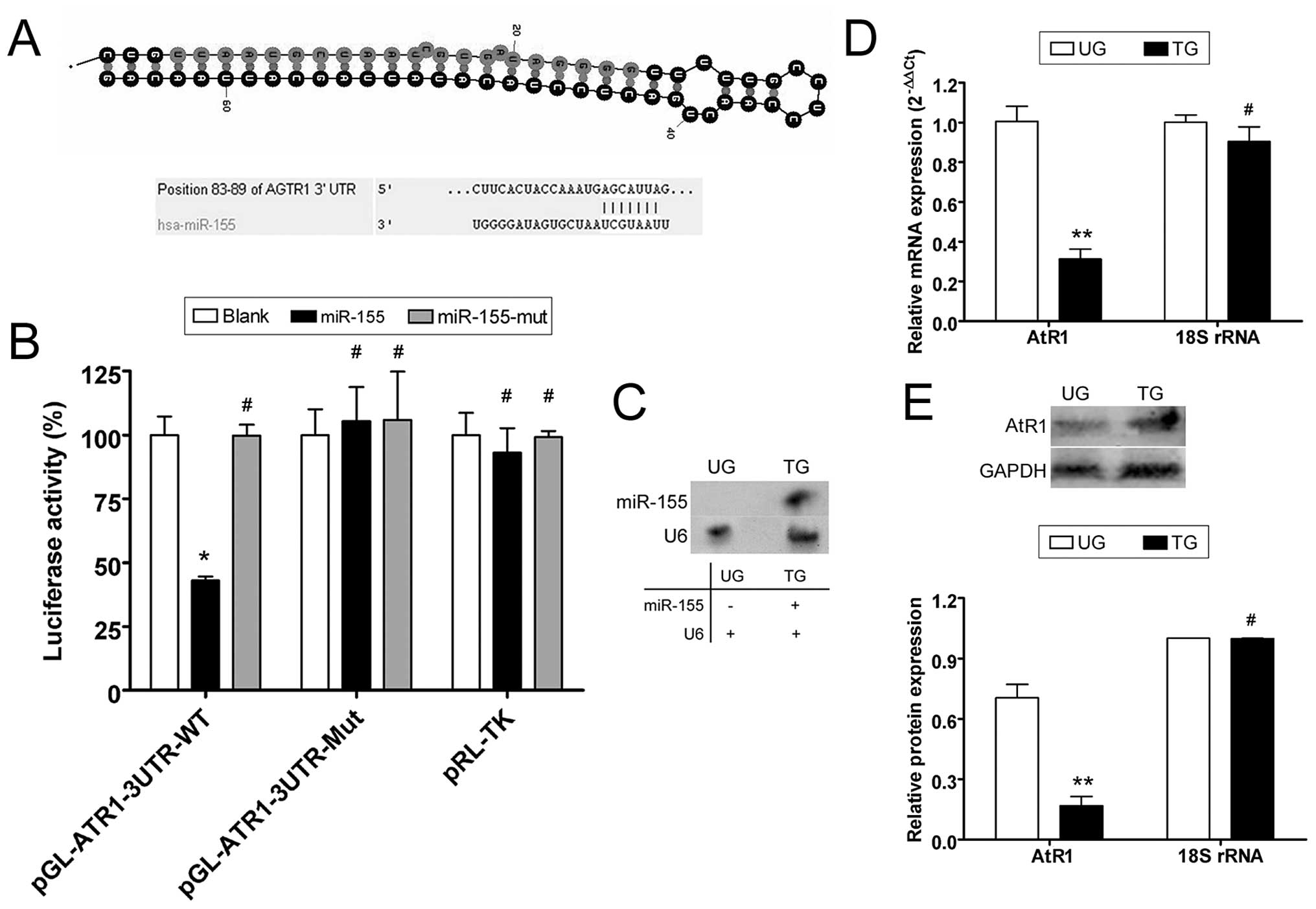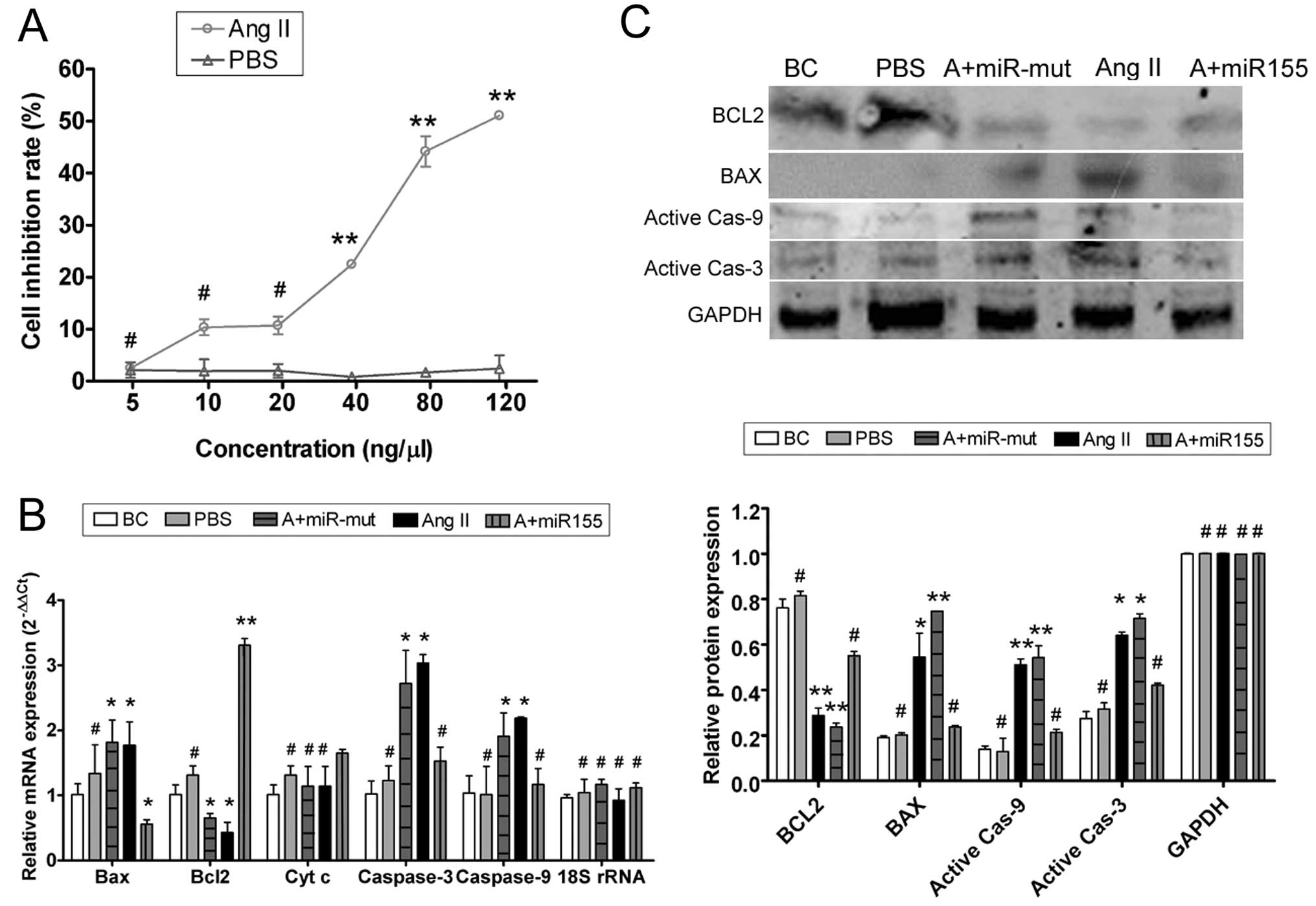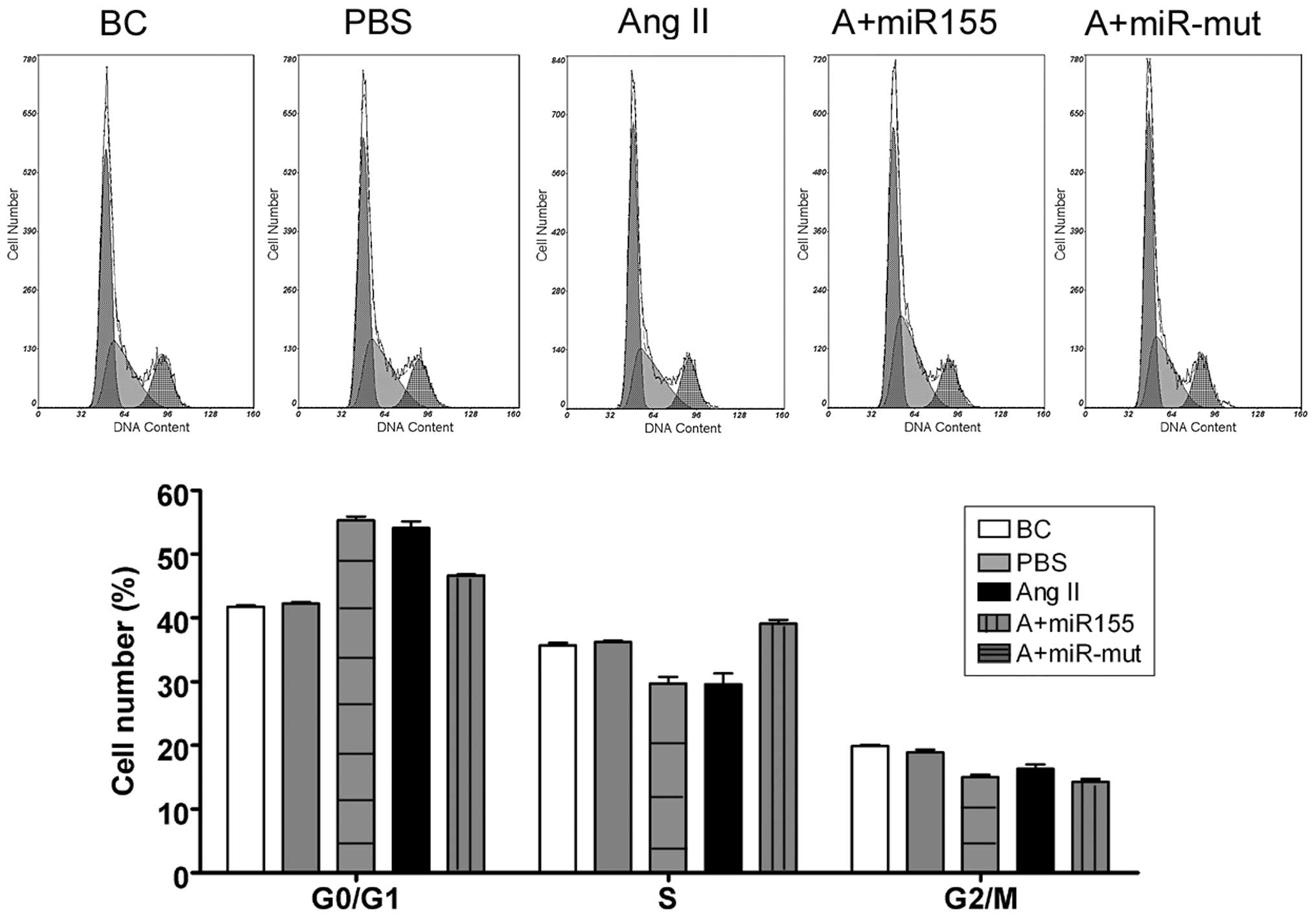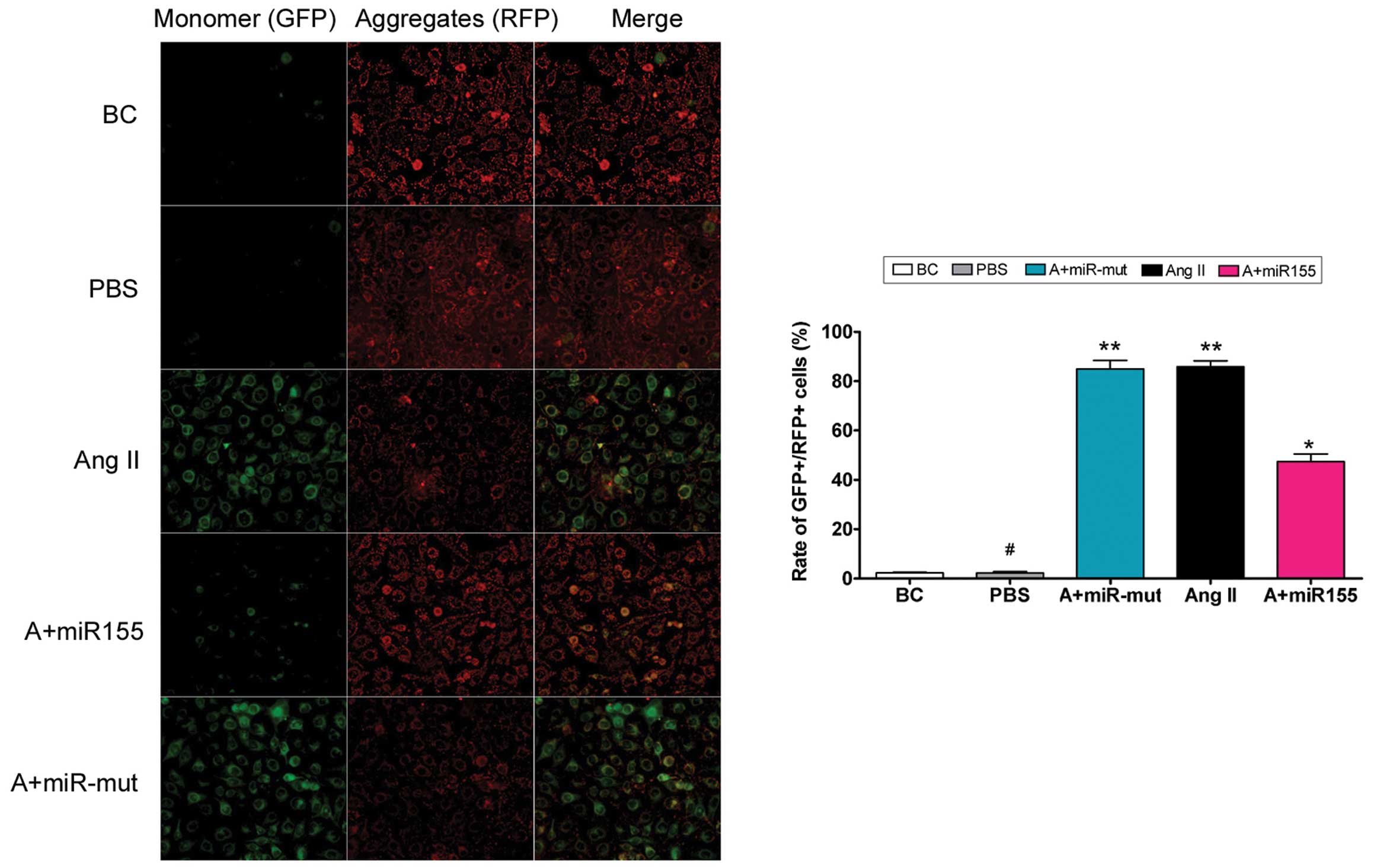Attenuation of exogenous angiotensin II stress-induced damage and apoptosis in human vascular endothelial cells via microRNA-155 expression
- Authors:
- Published online on: November 15, 2012 https://doi.org/10.3892/ijmm.2012.1182
- Pages: 188-196
Metrics: Total
Views: 0 (Spandidos Publications: | PMC Statistics: )
Total PDF Downloads: 0 (Spandidos Publications: | PMC Statistics: )
Abstract
Numerous studies have indicated that cells and tissues have means of blocking their response to continuous stress signals to protect themselves from damage. Overexpression of angiotensin II (Ang II) in the renin-angiotensin system can cause vascular endothelial damage, but the mechanism of adjustment of the dynamic equilibrium remains unclear. In this study, we investigated whether microRNA-155 (miR-155) can suppress continuous Ang II stress signals that would otherwise cause vascular endothelial damage. We isolated and cultured human umbilical vein endothelial cells (HUVECs) and transfected one group of these with a mature miR-155 expression plasmid. Quantitative real-time PCR (qRT-PCR) and western blotting showed Ang II type 1 receptor expression to be decreased in miR-155-transfected HUVECs compared with untransfected cells. The MTT proliferation assay revealed that exogenous Ang II suppressed proliferation of HUVECs in a concentration-dependent manner. When HUVECs were cultured in medium containing Ang II at the half maximal inhibitory concentration (68.94 ng/µl) for 24 h, qRT-PCR and western blotting showed that expression of the apoptosis inhibitor Bcl-2 in the HUVEC-Ang II group was markedly lower than that in controls, but apoptosis-promoting factors (Bax, cytochrome c, caspases-9 and -3) were not. Co-immunoprecipitation western blotting and immunofluorescence staining showed that exogenous Ang II increased the phosphorylation and activation of extracellular signal related kinase (ERK)1/2. Exogenous Ang II also influenced HUVEC migration and capillary tubule formation in vitro. However, after transfection of HUVECs with miR-155 under the same conditions, expression of apoptosis-promoting factors and ERK1/2 phosphorylation were reduced significantly and HUVEC migration and capillary tubule formation were restored to some extent. Thus, miR-155 attenuated the effect of exogenous Ang II-induced ERK1/2 activation to reduce HUVEC damage and apoptosis. Moreover, miR-155 maintained HUVEC migration and capillary tubule formation in vitro.















